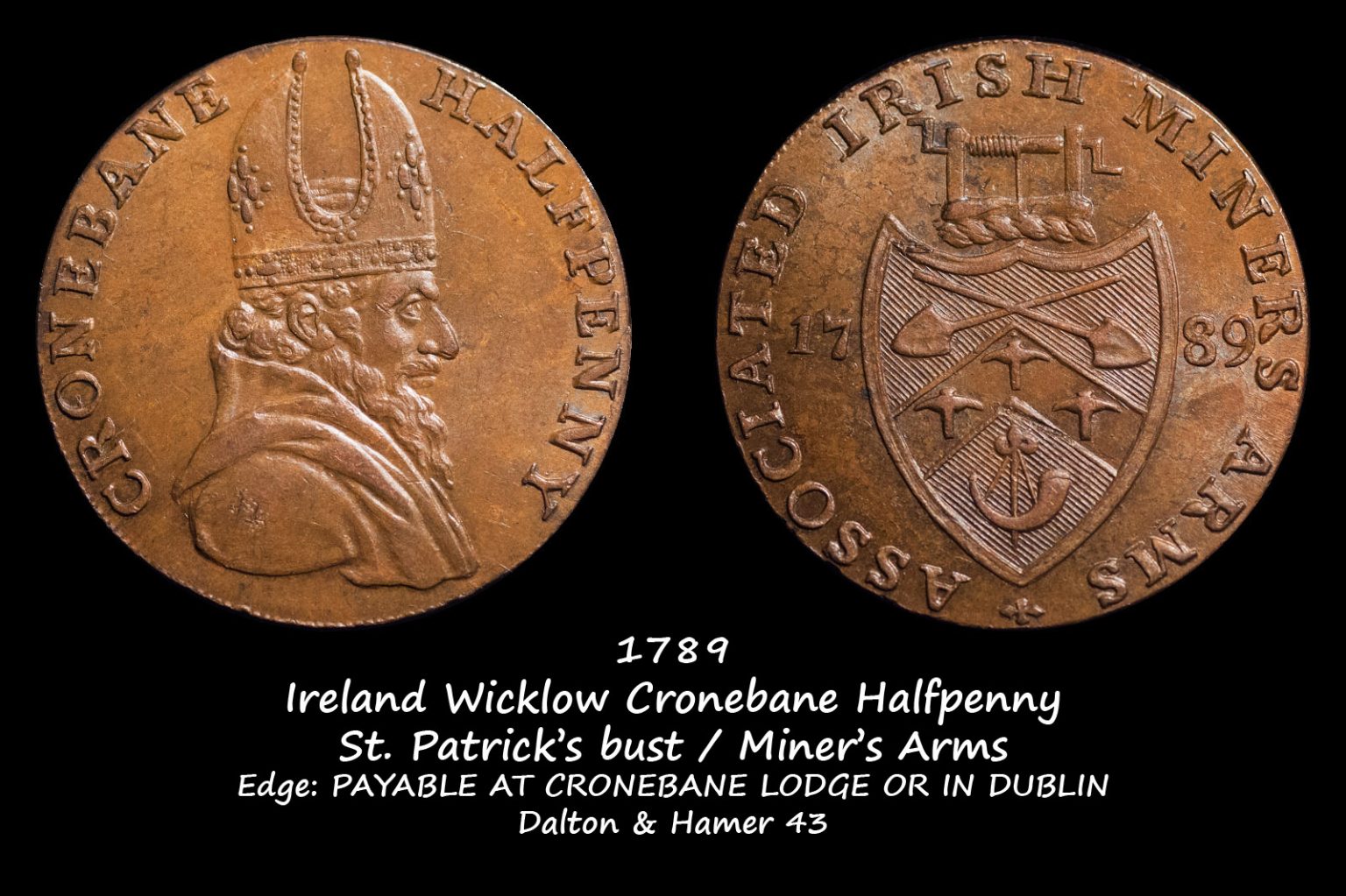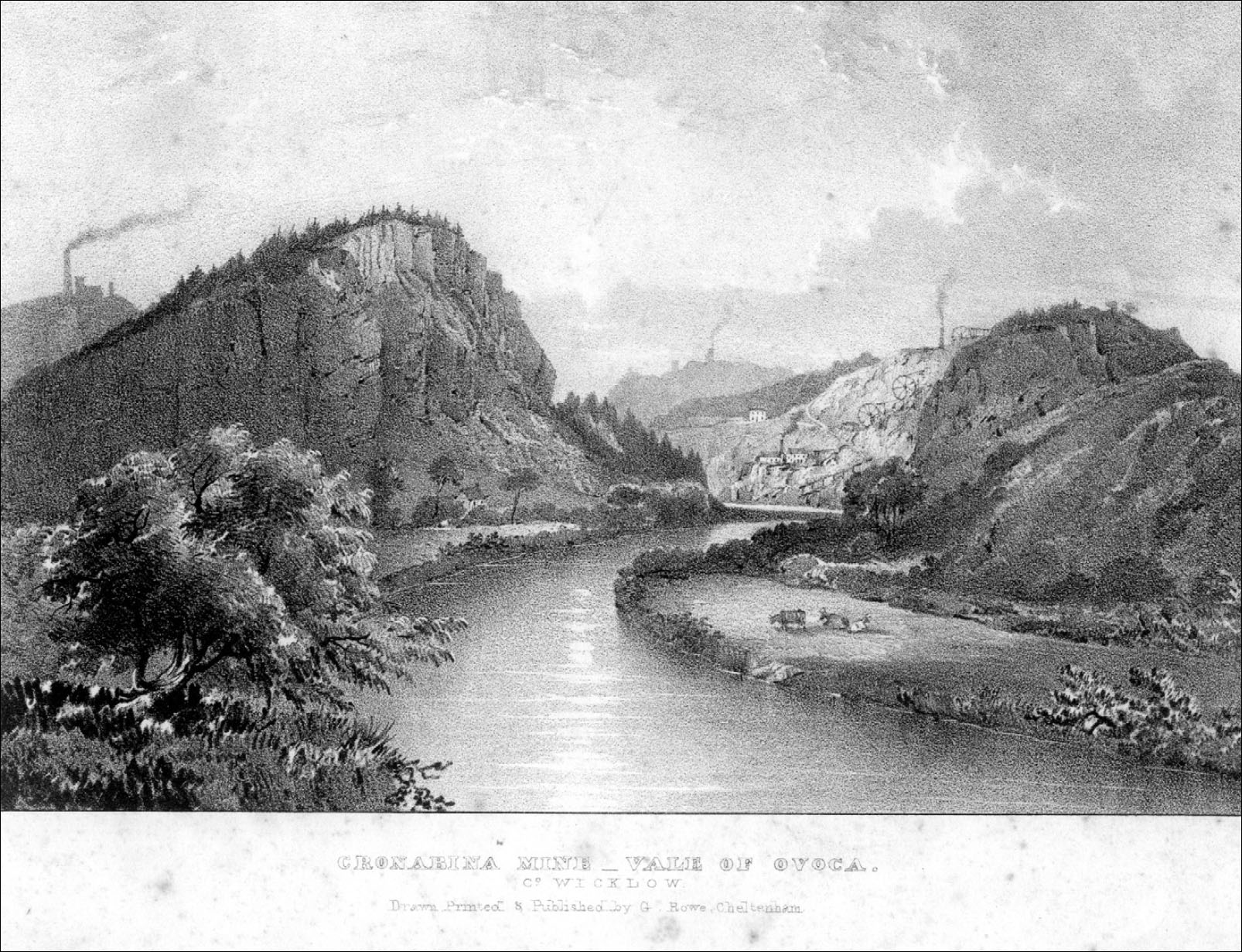
Online collections
monedastodas.com
All collections » Tokens » Wicklow Cronebane Halfpenny
The front side depicts Saint Patrick, the patron saint of Ireland, dressed in a cassock with a hood and a miter on his head. There are variants of tokens depicting Saint Patrick with a staff. Circle legend: “CRONEBANE HALFPENNY”.

The reverse side shows the emblem of the United Irish Mining Company (Associated Irish Mines Company), crowned with a collar. Circle legend: “ASSOCIATED IRISH MINE COMPANY”. In the middle is the date 1789 separated by a shield.
Mining activity in the Avoca Valley was first documented in 1752, when 500 miners were reported working at the Kronebane Mine. In 1766, the lands in the east and west of the Avoca Valley came into the possession of John Howard Kyan, who founded the Hibernian Mine Company (HMC). At first, Kyan managed his mines on his own, but he later submitted the mining rights to the Tigroni and Kronebane mines to Charles Roe. By 1786, Ballymurtach, on the west bank of the Avoca River, became the center of HMC mining activity.
In 1791, Roe's company was incorporated by Act of Parliament as the United Irish Mining Company (AIMS). At that time, AIMS was extracting copper ore and had about 2,000 miners. The ore was sent for smelting to Neath, near Swansea in Wales, where Charles Roe smelted copper and zinc ores, as well as the production of brass. In retrospect, it was an unfortunate decision for HMC to sell the Kronebane mines, as a rich new vein of copper ore was discovered there in 1788.
In 1789, the AIMS issued halfpenny tokens as a small bargaining chip and also to pay wages to its miners.
In 1811, the Cronebane mines were leased by the Williams Brothers and Company of Cornwall. By 1835 they employed over 600 people. The mines were completely converted to work from eight water wheels, and subsequently steam engines were installed to pump water and transport ore up the shafts, which significantly increased copper production. Before modernization, pumping was carried out using horsepower.

Until the 1850s, the mines were mainly copper ore, but then iron pyrite began to be mined, which was sold to Henry Hodgson, who built a chemical plant on the other side of the river in Arklow. Another important product was yellow iron oxide, present in the form of fine particles in mine waters and recovered in sumps. Williams' company went out of business in 1873.
In 1959, St. Patrick's Copper Mines Ltd took the Tigroni mines to the next level, but only lasted three years. In the 1970s, Avoca Mines Ltd developed two large open pits, lifting about 880,000 tons of copper ore. The waste rock was dumped on the surface and is now a local landmark called Mount Platt. This development significantly destroyed much of the underground mines of the 18th and 19th centuries.
Edge inscription: “PAYABLE AT CRONEBANE LODGE OR IN DUBLIN”.
Engraver and maker John Gregory Hancock.